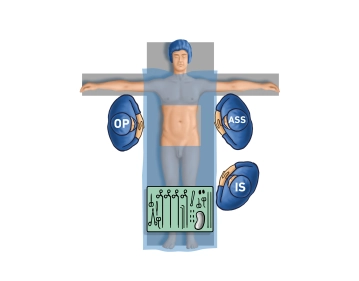An intestinal stoma is a surgically created artificial opening in the intestine that allows for stool excretion.
A loop ileostomy might have been created for the following indications:
- As a protective ileostomy in the context of a low anterior resection (LAR) for rectal cancer
- In case of a threatened anastomosis during colon/rectal resection (e.g., perforation with peritonitis, colonic ileus, ischemia)
- After an anastomotic leak in colon/rectal resection
- In abdominal trauma with bowel injury
- In the management of complicated anal fistulas/rectovaginal fistulas
- After proctocolectomy for ulcerative colitis (three-stage procedure)
- Palliative ileostomy in ileus (e.g., peritoneal carcinomatosis)
Timing of Stoma Reversal
There is currently no clear recommendation for the optimal timing.
An early closure of a loop protective ileostomy 10 to 14 days after creation is theoretically possible after quick recovery from the primary surgery, with positive effects on quality of life and potential stoma complications. However, due to physiological inflammatory adhesions between the intestine and abdominal wall as well as between the intestinal loops themselves, reversal at this early stage is significantly more difficult. These adhesions typically resolve within 6-10 weeks, which is why reversal usually occurs 10-12 weeks after creation.


